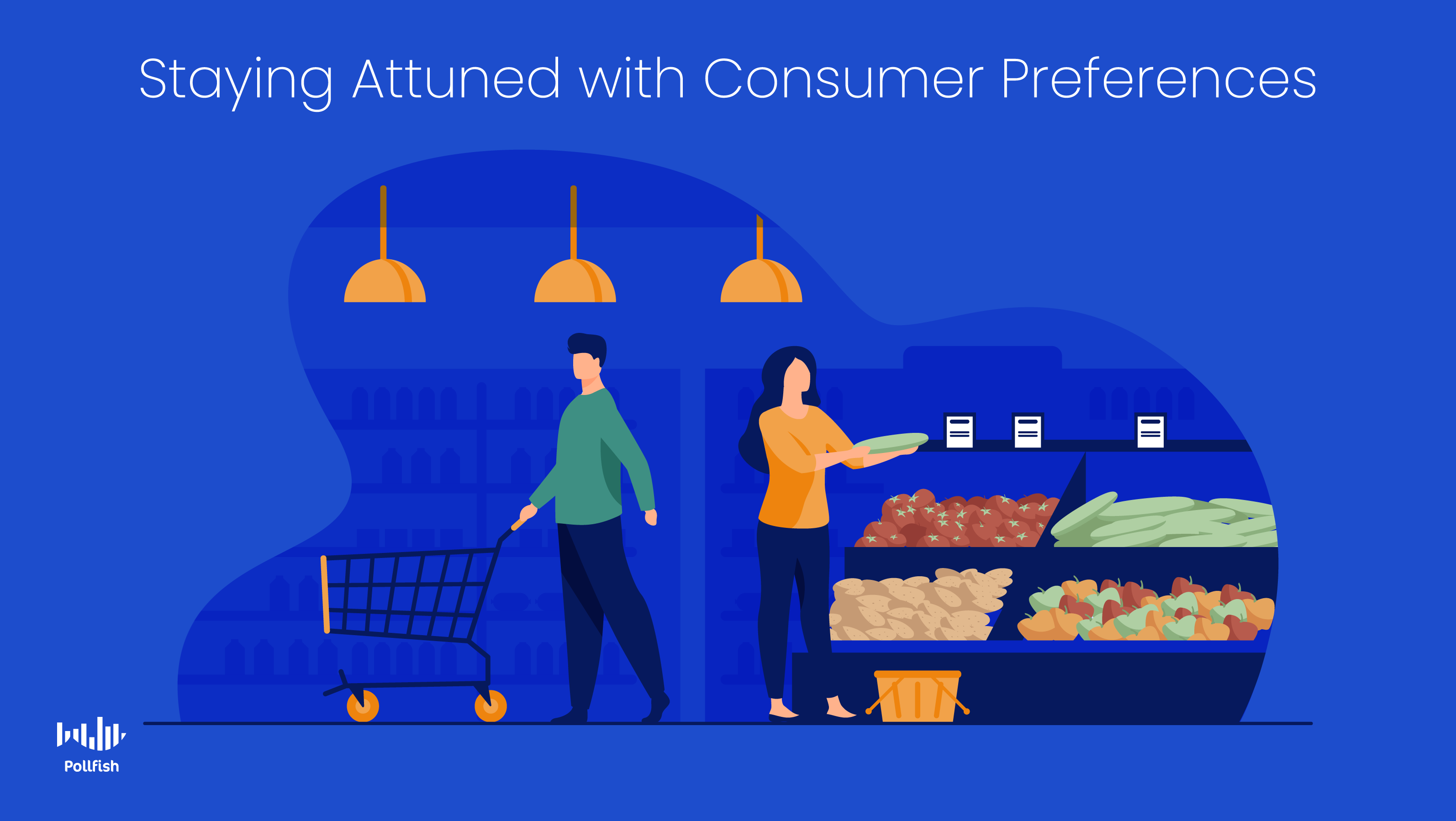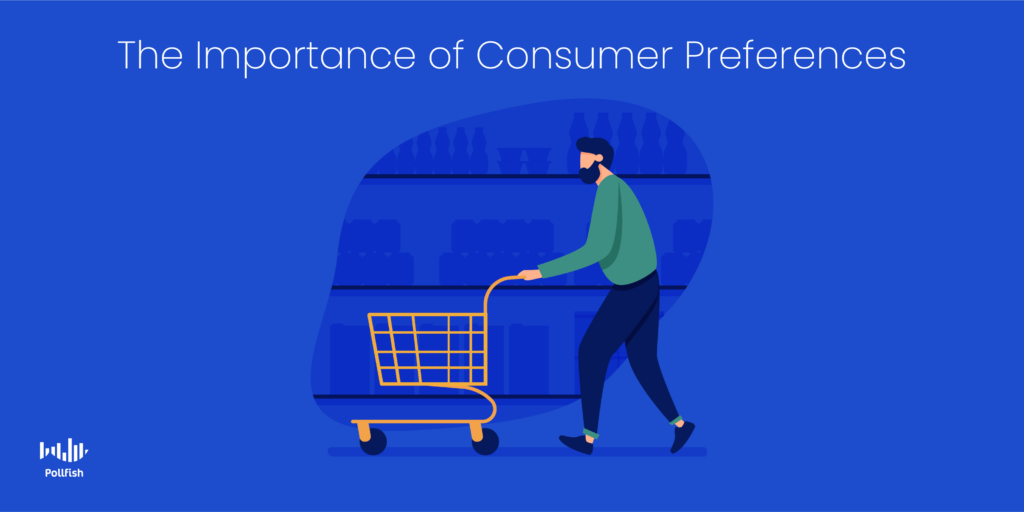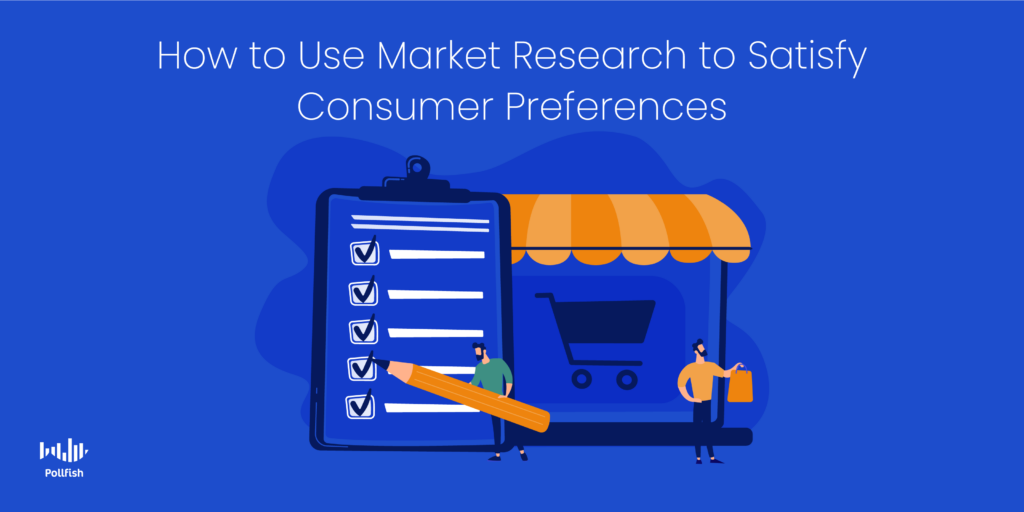How to Cater to All Kinds of Consumer Preferences

Catering to consumer preferences is an absolute must to succeed, and this requirement is even more pronounced in an omnichannel digital world, as this space has seen constant changes. Many of these changes have been and will continue being connected to the Covid-19 pandemic.
It is of the utmost importance to be attuned to your consumer preferences during this time if you seek to move past it. As expected, this period has experienced many changes in how consumers prefer to shop. For example, baby boomers, who have always almost exclusively shopped in brick-and-mortar stores, have increased their online shopping by almost 50% since the start of the pandemic.
30% of online consumers prefer using a BOPIS (Buy Online, Pickup In-Store) model or the curbside pickup option over delivery. 87% of US consumers now prefer to shop in stores with touchless or self-checkout options.
As such, no matter how well you think you may know your target market, consumer behavior, and consumer preferences, they are subject to change. This is especially compounded with the constant changes in digital and the continuation of the pandemic.
This article examines consumer preferences in their many forms, their importance, how to cater to them and how to use market research to discover them and properly serve them.
Understanding Consumer Preferences
Consumer preferences refer to a wide range of subtopics, as they relate to the tastes and fondness of consumers towards certain things over others. This can relate to many other customer concerns, such as the customer buying journey, customer buying behavior, brand loyalty, customer satisfaction.
Consumer preferences largely involve subjective individual tastes, likes and dislikes, and inclinations. When you’re working on a marketing campaign or developing a new product for your target market, you need to consider their personal preferences to reap good results.
To understand your target market’s preferences, you’ll need to understand what makes them tick as consumers. As such, you’ll need to understand the various factors making up their consumer preferences. These factors include the following concerns:
- Consumer motivations
- The distribution channels they tend to buy from the most
- What drives them to make one purchase over another
- This can involve price, convenience, product features, quality, causes supported by a brand,
- The values that matter to them
- How they prefer to spend their time
- Their customer experience expectations and desires
- Their buying pains
These factors present important questions for marketers and business owners to answer. Fortunately, they can be easily tested by applying the correct market research techniques.
Consumer preference studies use well-developed subjective analytical tools, such as an online survey platform that connects businesses with their consumers. Businesses can construct a survey to their needs and liking, based on the capabilities of the online survey tools they use.
This includes conducting survey campaigns about various topics, concerns and needs, such as consumer desires, aversions, product performance, customer behavior, etc. These can be stand-alone studies or performed in tandem with other studies and any of the 6 main types of research.
The Importance of Consumer Preferences
The importance of consumer preferences is rather self-evident; if you satisfy your target market’s preferences, they’ll buy from you. In this main sense of this importance, businesses can gain new customers from their target market when they meet their preferences.
This can help lower your customer acquisition cost, the chief price of acquiring a new customer. This is an especially important metric to reduce, given that it costs more to gain new customers than retaining existing ones.
Tapping into your consumer preferences will also increase and maintain your customer retention rate when you abide by your customers’ preferences. As you’ll discover from many marketing sources, customer retention is more important than acquisition.
First off, as recently mentioned, it costs more to gain new customers than it does to retain current ones; but aside from this, existing customers are also more valuable. They, therefore, have a higher customer lifetime value, as they continue buying from a business. Retaining customers also builds consumer loyalty, which does not merely yield continuous profits for a business.

This is because happy customers will share their satisfaction with their peers, colleagues and even thousands, possibly millions, with internet users who view their reviews and testimonials. As such, it fosters each retained customer to be a brand advocate, spreading positive feedback about your business, which is essentially free marketing services.
Consumer preferences are also vastly important to stay attuned with, as they dictate virtually all of your campaigns, marketing and otherwise, except for employee-related affairs. You wouldn’t design an advertising campaign without injecting your consumers’ needs and interest in it, as it wouldn’t interest them, let alone spur them into buying from your business.
You must be well-acquainted with your consumer preferences before taking on any consumer-facing campaign; otherwise, you would be wasting a vast amount of time and resources.
Understanding their preferences provides a necessary starting point to undertake any consumer-related campaign, whether you’re launching new marketing messages or services, or simply testing your hypotheses with explanatory or exploratory research.
Finally, it is important to be acclimated to consumer preferences, as they are subject to change. Major current events, politics, opinion pieces and other media sources (think documentaries, films, books) wield the influence to change consumer preferences.
Aside from these stimuli, your competitors are also racing to fulfill their needs and their innovations and improvements may change your consumer preferences in their favor.
The 11 Kinds of Consumer Preferences
There is a vast range of matters that concern customers; as such, there are many categories of consumer preferences. Before you study any of these in relation to your consumers and create consumer-facing campaigns to show them you’re paying attention, you should know what makes up these preferences.
The following lays out the 11 main categories of consumer preferences:
- Service preferences
- This involves the style of customer service your consumers prefer. For example, some customers appreciate long, detailed explanations, while others want to be served as quickly as possible.
- You can examine these preferences with the customer service survey.
- UX preferences
- User experience involves all user interactions and experiences with a product, services, single experience and service.
- It deals with how consumers perceive the usage, utility, ease of use, and efficiency of these things.
- You can conduct a UX survey to quiz your consumer on these preferences.
- Communication preferences
- The way consumers prefer to receive information will differ from person to person.
- This involves the kinds of content consumers tend to consume, the length of the content and the method of communication.
- For example, some prefer emails, others prefer chatting, while others prefer phone calls and so on.
- As far as content is concerned, some consumers may prefer technical language and formal speech; others may lean towards a storytelling angle or towards
- emotional marketing.
- There are various consumer surveys you can conduct to better understand this kind of preference.
- Convenience preferences
- Convenience plays a major role in customer buying behavior and may influence particular customer segments more than others.
- This preference involves various components that add to making customers’ experience easier, such as fast delivery, longer customer support phone hours, brick-and-mortar shops open on the weekends, etc.
- You can understand consumer convenience preferences by running all kinds of consumer surveys.
- Customer effort preferences
- This entails how much effort customers prefer to put into their interactions with companies.
- This can involve digital efforts, such as signing up for a newsletter, checking out items, interacting with a UI element and more.
- Conduct the customer effort score (CES) survey to assess the levels of effort your consumers have to use across your UX, digital properties and interactions with representatives.
- Repeat purchase preferences
- This involves the preferences of consumers in regards to how often they buy something, especially if it’s from the same company.
- You should study whether your consumers go for old and reliable products, or try something new. Some consumers prefer repeat purchases of the same things, others will be keen on variety.
- To understand this preference, you should conduct correlational research, as this will show you whether correlations exist between various variables and whether customers make repeated purchases.
- Time preferences
- Consumers have preferences on how to spend their time. As such, some will prefer short, sweet and to-the-point content and experiences.
- Others who are more detail-oriented and have more time to spare, will prefer to spend more time interacting with your brand.
- You can learn more about time preferences by running a CES survey or other consumer surveys.
- Sensory preferences
- These pertain to the senses, such as taste, smell, touch, sight and hearing.
- Although these preferences are especially important in particular industries, such as the food and fragrance industries, sensory information should be considered when creating various company assets and experiences, such as ad campaigns, site designs, packaging designs and more.
- Study these preferences with the customer experience survey, which you can use to delve into all kinds of CX.
- Risk preferences
- This involves how open and frequently your customers take risks, especially in regards to buying from new brands or consuming new products.
- Some customers may prefer using a prominent brand, while others may have no qualms about opting for newcomers or more under-the-radar companies.
- Run a risk assessment of your consumers with the risk aversion survey.
- Values-based preferences
- Brand purpose has become increasingly crucial to consumers when they choose one brand over another.
- As such, the degree to which a brand matches consumers’ personal stance and ethics affects whether they choose to buy from the brand.
- Perform a customer feedback survey to gain insights on whether your target market makes purchasing decisions based on values.
- CX preferences
- These preferences are even more encompassing than UX preferences, as they refer to the overall experience a customer attributes to a brand.
- This includes all the sensory experiences they undergo, their digital experience, interactions with representatives and all else in their customer buying journey.
- You can perfect your customer experience by conducting the aforementioned CX survey. This will help you avoid points of friction anywhere in your consumers’ CX.
How to Satisfy All Your Consumer Preferences with Market Research
Market research is the foremost practice for scrutinizing your consumers and satisfying them in all of your campaigns. Whether you opt for secondary or primary market research, the intelligence you’ll extract from either is invaluable to understanding your customer preferences.
It’ll inform you on how to make smarter business decisions, the kinds that delight your consumers, thereby driving higher ROIs.

However, while both forms of research are important, it is primary research that allows you to answer questions and concerns specific to your business and target market. It also grants you unique insights, especially if you opt for the custom research approach, as opposed to relying on syndicated research, in which a third-party researcher owns and dictates research results.
First off, you’ll need to understand the makeup of your consumer base. To do so, you’ll need to conduct market segmentation, which allows you to properly organize distinct groups of people making up your target market.
This practice also helps you delve deeper by forming customer personas, fictional characters that represent unique individuals, based on traits beyond demographics and location. Both of these practices of segmenting your consumers are a must, as you’ll need to know who they are before studying the specific preferences of each.
In short, segmentation allows you to better determine consumer preferences, by categorizing your consumers into distinct groups and allocating preferences to each. This will make your market research and its ensuing marketing activities that much more focused and granular, as you can target segments, as opposed to an entire target market sample.
After you’ve narrowed down your target market into segments and customer personas, you ought to study the preferences of each. To do so, you’ll need a robust online survey platform; this tool will allow you to extract all the consumer research you’ll need to master catering to consumer preferences.
As the previous section about the 11 kinds of consumer preferences shows, you can pair surveys with your study of any of those preferences. You can use general business surveys or consumer surveys for certain consumer preferences, while others will require surveys specific to a campaign or aspect of CX, such as the CES survey.
Taking Your Research to the Next Level
To cater to the subjective nature of consumer preferences, you’ll need to use a high-performing provider of market research. Given that online surveys allow you to access the minds of customers quickly and efficiently, the online survey platform you choose is of utmost importance.
For quality research on consumer preferences, opt for a survey tool that runs on random device engagement (RDE) sampling, as this will enable you to reach respondents in their natural digital environments, in turn reducing all kinds of survey bias.
You should also implement an online survey platform that implements artificial intelligence and machine learning to disqualify survey fraud and poor-quality data and provides a mobile-first approach design.
An online survey provider with these functionalities and more will allow you to effortlessly execute all your market research campaigns, making it easy to tackle consumer preferences.
Pollfish Marketing Team
Ready to Try Pollfish?
Create your survey with AI, target high-quality respondents starting at $0.95 per complete, and start getting results in just minutes in real-time. From running a simple product concept survey to managing a constant stream of trackers for dozens of clients in dozens of countries, we’ve got you.
